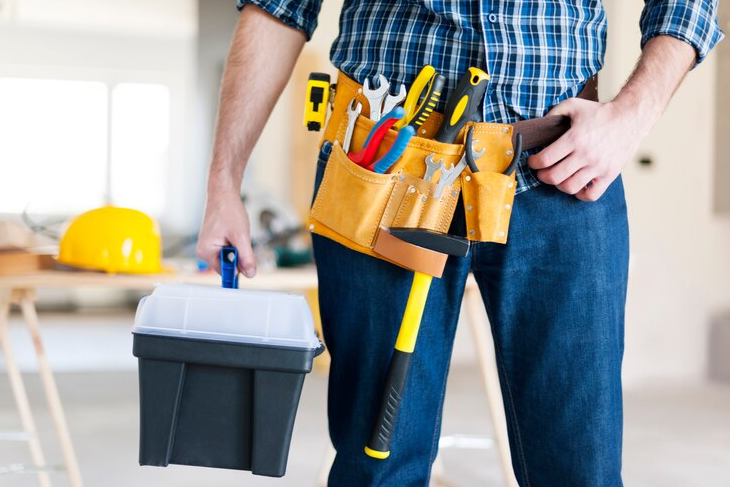How To Become A Licensed Handyman
Becoming a handyman and working for yourself is a goal which many people who enjoy getting their hands dirty will aspire to achieve. But how do you go about finding out how to become a licensed handyman?
When it comes to working as a handyman, many people will aspire to be a self employed worker. Being self employed has a number of benefits for an individual and many people dream of being able to escape the standard working environment by being their own boss, and working for themselves. While it is true that there are many difficulties associated with being a self employed handyman, there is also no doubting that finding out how to become a licensed handyman will have great benefits for your enjoyment of your working career and will go a great way in regards to helping you to enjoy providing people with your handyman services.
So, what steps are there when it comes to finding out how to become a licensed handyman?
How To Become A Licensed Handyman
 There are a number of difficulties associated with learning how to become a licensed handyman, but almost anyone who works for themselves as a licensed handyman will tell you that the difficulties are worth it. Being self employed does not come with the job security that traditional employment does—if you have no clients, you have no income, and that’s final, whereas your boss will have to pay you for your salary either way. However, being your own boss is far more enjoyable for many people, and so learning how to become a licensed handyman is critical in starting your self employed career.
There are a number of difficulties associated with learning how to become a licensed handyman, but almost anyone who works for themselves as a licensed handyman will tell you that the difficulties are worth it. Being self employed does not come with the job security that traditional employment does—if you have no clients, you have no income, and that’s final, whereas your boss will have to pay you for your salary either way. However, being your own boss is far more enjoyable for many people, and so learning how to become a licensed handyman is critical in starting your self employed career.
Things To Know Before Learning How To Become A Licensed Handyman
For anyone considering the possibility of becoming a licensed handyman, it is important to understand first that the rules for handyman licenses will be different on a state by state basis. Before trying to obtain your own handyman license, you should therefore ensure that you understand the rules for your own state. Usually, you will be able to find and locate this information on your State Board of Contractors or through the National Contractor License Service. Other licensed handymen in your local area may also be able to advise you on where and how to find the information you need in order to obtain your license.
Getting Your Handyman License
Once you have found out about the requirements for starting the process in regards to becoming a licensed handyman, you should then ensure that you work to get adequate training for the services that you will be providing. Even if you are already skilled, it will be necessary for you to be able to demonstrate your credentials with your state in order to get your license, and so official qualifications will be required. You will often be required to partake in a handyman exam as part of this licensing process, the dates and information for which can be requested from your State Board of Contractors.
Once you have gotten your handyman license, you can then obtain a business license—if it is required as part of your state’s licensing requirements. This can be done by requesting an application form for the creation of a small business from your Secretary of State. In some states, the license may be provided to you as soon as you have submitted the necessary paperwork; for others, processing times can be as high as six weeks.
Handyman Cost Guide
After obtaining your handyman license, it’s essential to understand how to set your rates to ensure you are compensated fairly for your skills and services. Here’s a general guide on typical rates you can charge your clients:
Common Handyman Services and Suggested Rates
- Minor Repairs and Maintenance:
- Hourly Rate: You can typically charge an hourly rate for small jobs. Consider offering a flat rate for very simple tasks.
- Painting and Drywall Repair:
- Hourly Rate: These tasks are often billed hourly. For larger projects, you might offer a per-job rate based on the size and complexity of the work.
- Plumbing and Electrical Work:
- Hourly Rate: Due to the complexity and skill required, plumbing and electrical work generally command higher hourly rates. Some jobs might be priced on a per-job basis.
- Carpentry and Cabinet Installation:
- Hourly Rate: Carpentry and cabinet installation can be billed hourly. For larger projects, a per-project rate might be more appropriate.
- Outdoor Work and Landscaping:
- Hourly Rate: Outdoor tasks, such as minor landscaping or building a deck, are usually billed hourly. Larger projects might be priced at a fixed rate, considering both labor and materials.
Factors Affecting Your Rates
- Experience and Expertise: More experienced handymen can charge higher rates due to their skill level and reliability.
- Geographical Location: Rates can vary significantly based on the cost of living in your area. Urban areas typically have higher rates than rural areas.
- Scope of Work: Larger or more complex jobs will warrant higher rates.
- Materials and Supplies: Always factor in the cost of materials when quoting a job. Higher-quality materials will increase the total cost.
Let’s discuss more information about setting your rates in our post about Handyman Cost guide.